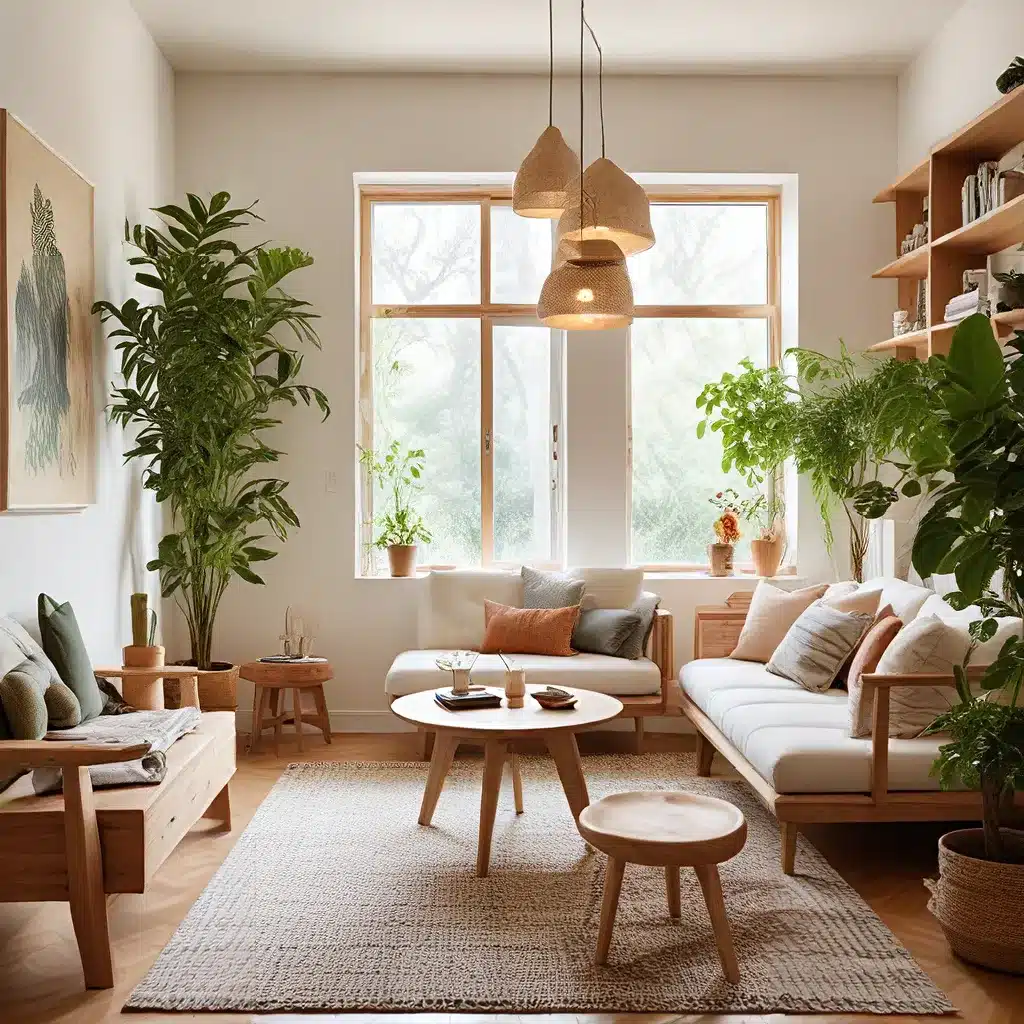
In a world where environmental consciousness is becoming increasingly paramount, the demand for sustainable and eco-friendly interior design solutions has never been higher. As homeowners and design enthusiasts seek to create beautiful, functional spaces that also minimize their carbon footprint, the need for innovative approaches to compact interiors has emerged as a top priority.
Embracing the Power of Small-Space Design
Gone are the days when expansive, grand homes were the epitome of luxury. Today, more and more people are opting for compact living, whether it’s a cozy urban apartment, a minimalist tiny home, or a thoughtfully designed suburban abode. These smaller spaces present both challenges and opportunities for savvy designers who understand the art of maximizing function and aesthetics within limited square footage.
One of the key principles of successful small-space design is the strategic use of multifunctional furniture and adaptable layouts. By incorporating pieces that serve dual or even triple purposes, homeowners can minimize clutter, optimize storage, and create a sense of openness and flow throughout the home. From ottomans with hidden storage to convertible sofas that transform into guest beds, the options for maximizing every inch of a compact interior are endless.
Cultivating an Eco-Conscious Aesthetic
Sustainability isn’t just about function; it’s also about aesthetics. Savvy designers are increasingly incorporating natural materials, renewable resources, and energy-efficient technologies into their small-space design solutions to create visually stunning and environmentally responsible interiors.
One such material gaining popularity is bamboo, a fast-growing and highly durable grass that can be used for everything from flooring and cabinetry to furniture and decor. Not only is bamboo a renewable resource, but it also boasts a beautiful, organic aesthetic that complements a wide range of design styles, from modern minimalism to rustic farmhouse.
Another eco-friendly material gaining traction is recycled plastic, which can be transformed into stunning countertops, backsplashes, and even decorative accents. By repurposing waste materials, designers can create unique and sustainable design elements that add both visual interest and environmental impact.
Maximizing Natural Light and Ventilation
In compact spaces, strategically leveraging natural light and ventilation can have a profound impact on the overall feel and functionality of a room. By incorporating large windows, skylights, and carefully positioned mirrors, designers can create the illusion of a more expansive, airy environment, even in the most diminutive of spaces.
Furthermore, the incorporation of energy-efficient windows and passive ventilation systems can not only enhance the aesthetic appeal of a space but also contribute to its overall sustainability. These design elements can help regulate indoor temperatures, reduce the need for energy-intensive heating and cooling systems, and promote a healthier, more comfortable living environment.
Embracing Multifunctional Furniture and Adaptable Layouts
One of the hallmarks of successful small-space design is the strategic use of multifunctional furniture and adaptable layouts. By incorporating pieces that serve dual or even triple purposes, homeowners can minimize clutter, optimize storage, and create a sense of openness and flow throughout the home.
From ottomans with hidden storage to convertible sofas that transform into guest beds, the options for maximizing every inch of a compact interior are endless. Designers who excel at small-space planning often employ clever tricks, such as built-in seating, fold-away desks, and transforming coffee tables, to create a seamless and functional living environment.
Layering Textures and Patterns
While minimalism is often the default design approach for compact spaces, savvy designers understand the power of layering textures and patterns to add depth, visual interest, and a sense of coziness to smaller rooms. By juxtaposing smooth, sleek surfaces with natural, tactile materials, and introducing a diverse range of patterns and hues, designers can create an inviting and visually stimulating environment that belies the room’s modest dimensions.
This layering technique can be applied to everything from textiles and wall coverings to furniture and accessories, allowing homeowners to infuse their personal style and create a warm, welcoming atmosphere, even in the most compact of interiors.
Bringing the Outdoors In
Another key strategy for enhancing the feel of a compact interior is to blur the lines between indoor and outdoor spaces. By incorporating large windows, sliding glass doors, and verdant greenery, designers can create a seamless connection between the home and its surrounding environment, effectively expanding the perceived size of the living area.
The use of living walls, indoor planters, and potted plants can also serve to soften the hard edges of a compact space, introducing a sense of natural beauty and tranquility. Additionally, the strategic placement of mirrors can create the illusion of depth and further enhance the connection to the outdoors, making even the smallest of spaces feel more open and airy.
Designing for Luxury and Convenience
Contrary to popular belief, compact interiors don’t have to sacrifice luxury or convenience. In fact, savvy designers are increasingly finding ways to incorporate high-end finishes, custom built-ins, and innovative storage solutions into even the most diminutive of spaces.
From statement light fixtures and bespoke cabinetry to integrated appliances and hidden laundry areas, the opportunities to elevate the design and functionality of a compact home are vast. By collaborating with https://urbangraceinteriorsinc.com/ experienced interior designers, homeowners can unlock the full potential of their small-space living, creating a luxurious and highly personalized sanctuary that suits their unique needs and lifestyle.
Conclusion: Embracing the Art of Small-Space Living
As the demand for sustainable, eco-friendly design continues to grow, the importance of mastering the art of compact interior design has never been more critical. By embracing multifunctional furniture, adaptable layouts, and natural materials, designers and homeowners alike can create beautiful, functional spaces that not only minimize their environmental impact but also enhance their overall quality of life.
Whether you’re looking to transform a cozy urban apartment or rethink the layout of a modest suburban home, the principles of sustainable small-space design can help you unlock the full potential of your living environment. So why not start your journey towards Sustainable Splendor today?

